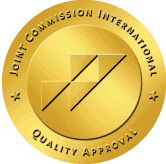When you’re navigating mental health treatment options, the alphabet soup of acronyms can feel overwhelming. IOP, PHP, inpatient care – what’s the real difference, and which path fits your unique situation? The truth is, choosing between an Intensive Outpatient Program (IOP) and a Partial Hospitalization Program (PHP) isn’t just about medical jargon – it’s about finding the right balance between getting the support you need and maintaining your daily life.
While both programs offer intensive therapy without requiring overnight stays, they differ significantly in time commitment and structure. PHP typically demands 5-6 hours of treatment daily for five days a week, while IOP usually involves three hours of programming for four days weekly. Understanding these distinctions can mean the difference between feeling supported in your recovery journey and feeling stretched too thin to succeed.
What Is a Partial Hospitalization Program (PHP)?
Partial Hospitalization Programs bridge the gap between inpatient care and traditional outpatient services. These programs provide intensive mental health treatment while allowing you to return home each evening.
Definition and Treatment Structure
PHP operates as a structured day program that delivers comprehensive mental health services during daytime hours. You attend treatment sessions 5-7 days per week for 4-6 hours daily, receiving integrated care that combines multiple therapeutic approaches. The program includes individual therapy, group therapy sessions, medication management, and specialized treatment modalities tailored to your specific condition.
Treatment teams coordinate your care through a multidisciplinary approach that addresses both immediate symptoms and long-term recovery goals. PHP programs typically run for 4-6 weeks, though duration varies based on your progress and clinical needs. This structured environment maintains consistency in your treatment schedule while providing flexibility to manage personal responsibilities outside program hours.
The difference between IOP and PHP becomes evident in the time commitment required – PHP demands significantly more hours per week than intensive outpatient alternatives. This increased time allocation allows for more comprehensive assessment and intervention strategies.
Level of Care and Supervision
PHP provides enhanced medical supervision through dedicated psychiatry providers and clinical staff who monitor your symptoms and treatment progress throughout each day. Medical professionals conduct regular assessments, adjust medications as needed, and respond immediately to any changes in your condition.
Clinical supervision in PHP exceeds what you’d receive in standard outpatient care, with staff-to-patient ratios designed to ensure adequate attention and support. Your treatment team includes psychiatrists, licensed therapists, nurses, and other mental health professionals who collaborate on your care plan.
This higher level of oversight makes PHP particularly suitable if you’re transitioning from inpatient hospitalization, adjusting to new medications, or experiencing symptoms that significantly impact your daily functioning. The intensive supervision model provides safety and stability while you work toward symptom stabilization and improved coping skills.
| Supervision Aspect | PHP Features |
|---|---|
| Medical oversight | Psychiatrists and nurses on-site |
| Staff ratios | Enhanced staffing for individual attention |
| Crisis response | Immediate intervention capabilities |
| Medication management | Daily monitoring and adjustments |
What Is an Intensive Outpatient Program (IOP)?

An Intensive Outpatient Program (IOP) provides structured mental health treatment while maintaining flexibility for your daily responsibilities. This program serves as a bridge between traditional outpatient therapy and more intensive treatment options, offering focused care without requiring overnight stays.
Definition and Treatment Flexibility
IOPs deliver comprehensive mental health treatment through structured therapy sessions that accommodate your work, school, or family commitments. These programs focus on psychotherapy techniques including cognitive-behavioral therapy (CBT), dialectical behavior therapy (DBT), and motivational interviewing to address mental health conditions and substance use disorders.
You’ll participate in both individual and group therapy sessions designed to develop coping strategies more rapidly than traditional outpatient therapy allows. Group therapy components encourage peer support and real-life application of therapeutic skills, creating a community-based recovery environment. IOPs provide minimal medical supervision compared to higher levels of care, making them ideal if you have a stable home environment and strong support systems.
The flexibility of IOPs allows you to continue living at home while receiving treatment, making this option suitable if you’re transitioning from more intensive care levels or managing conditions stable enough for outpatient settings. Treatment duration varies from several weeks to several months depending on your individual needs and progress.
Schedule and Time Commitment
IOPs typically require attendance 3 to 5 days per week with sessions lasting 2 to 4 hours each day. This schedule totals approximately 12 to 15 hours of treatment weekly, allowing you to balance recovery with personal and professional responsibilities.
| IOP Feature | Details |
|---|---|
| Weekly Schedule | 3-5 days per week |
| Session Duration | 2-4 hours per session |
| Total Weekly Hours | 12-15 hours |
| Medical Supervision | Minimal |
| Flexibility Level | High |
The part-time nature of IOPs enables you to maintain employment, attend school, or fulfill family obligations while receiving intensive therapeutic support. Sessions often occur during evening hours or weekends to accommodate work schedules, though daytime options remain available depending on your provider and specific needs.
This reduced time commitment compared to more intensive programs makes IOPs less expensive while still providing structured support for maintaining mental health stability. The difference between IOP and PHP becomes evident in this scheduling structure, as IOPs offer significantly more flexibility for managing daily life alongside treatment requirements.
Key Differences Between PHP and IOP

The difference between IOP and PHP centers on treatment intensity, supervision levels, and program structure. Understanding these distinctions helps you choose the most appropriate mental health treatment for your specific needs and circumstances.
Treatment Intensity and Duration
PHP demands a significantly higher time commitment compared to IOP programs. You’ll attend PHP sessions 4-6 hours daily across 5-7 days each week, totaling 25-30 hours of treatment weekly. These intensive programs typically last 4-6 weeks, providing concentrated therapeutic intervention designed to stabilize severe symptoms quickly.
IOP offers more flexibility with 2-4 hours of treatment per day, 3-5 days weekly, resulting in approximately 12-15 hours of weekly therapy. Your IOP program extends over 12-16 weeks or longer, allowing gradual skill development while maintaining work, school, or family responsibilities. This extended timeline accommodates the less intensive approach while ensuring comprehensive treatment delivery.
The scheduling differences reflect each program’s therapeutic goals. PHP creates an immersive treatment environment that replaces most daily activities temporarily, while IOP integrates recovery work into your existing routine without completely disrupting your life structure.
Level of Supervision and Support
PHP provides extensive medical supervision through multidisciplinary teams including psychiatrists, nurses, and specialized therapists. You’ll receive continuous monitoring of medication effectiveness, symptom progression, and treatment response throughout each session. This heightened oversight proves essential if you’re transitioning from inpatient care or managing complex psychiatric conditions requiring frequent adjustments.
IOP focuses primarily on structured therapy sessions with less frequent medical monitoring. Your treatment team emphasizes therapeutic interventions, coping skill development, and relapse prevention strategies rather than intensive medical management. This approach suits individuals with stable symptoms who can function independently between sessions while benefiting from ongoing therapeutic support.
The supervision differences reflect each program’s target population. PHP serves those requiring immediate stabilization and intensive monitoring, while IOP supports individuals with established stability seeking continued therapeutic progress.
Cost and Insurance Coverage
PHP programs typically cost more due to their intensive nature and comprehensive medical involvement. You’ll encounter higher daily rates reflecting the extended hours, specialized staff, and medical supervision required. Insurance coverage varies significantly, with many plans covering PHP as a medical necessity when properly documented and pre-authorized.
IOP presents more affordable treatment options with lower per-session costs and reduced weekly expenses. The decreased staffing requirements and fewer medical oversight components contribute to these cost savings. Insurance providers generally offer broader coverage for IOP services, making this option more accessible for extended treatment periods.
Cost considerations extend beyond immediate expenses to include opportunity costs. PHP’s intensive schedule may prevent you from working full-time, while IOP’s flexible structure allows continued employment, potentially offsetting treatment costs through maintained income.
Treatment Modalities in PHP and IOP Programs

Both PHP and IOP programs use evidence-based therapeutic approaches to address mental health and substance use disorders. The difference between IOP and PHP lies primarily in the intensity and frequency of these treatment modalities rather than the types of interventions offered.
Individual and Group Therapy
Individual therapy sessions form the foundation of both PHP and IOP treatment approaches. PHP programs typically provide longer individual therapy sessions that enable deeper exploration of complex issues and trauma-related concerns. These sessions occur more frequently throughout the week, allowing therapists to address immediate concerns and provide intensive personalized guidance.
Group therapy plays a central role in both treatment modalities, facilitating peer support and shared experiences among participants. PHP group sessions tend to be more structured and comprehensive, often including specialized groups for specific conditions or trauma processing. IOP programs emphasize group therapy as a primary treatment component, with sessions designed to build practical coping skills and foster community connections.
| Therapy Type | PHP Sessions | IOP Sessions |
|---|---|---|
| Individual Therapy | 2-3 sessions per week, 60-90 minutes | 1-2 sessions per week, 45-60 minutes |
| Group Therapy | Daily groups, 90-120 minutes | 3-5 groups per week, 60-90 minutes |
| Specialized Groups | Multiple daily options | 2-3 weekly options |
Behavioral Interventions
Cognitive Behavioral Therapy (CBT) serves as a primary intervention in both PHP and IOP programs, addressing negative thought patterns and developing healthy coping strategies. PHP programs often incorporate more intensive CBT sessions that allow for deeper cognitive restructuring work. The higher frequency of sessions enables participants to practice new skills and receive immediate feedback from therapists.
Dialectical Behavior Therapy (DBT) appears more commonly in PHP settings due to its intensive skill-building requirements. PHP participants engage in comprehensive DBT modules covering distress tolerance, emotion regulation, interpersonal effectiveness, and mindfulness. IOP programs may offer modified DBT components but typically focus on core skills that participants can immediately apply to daily situations.
Relapse prevention techniques receive emphasis in both treatment modalities, with PHP providing more intensive skill development sessions. IOP programs excel at teaching practical relapse prevention strategies that participants can carry out while maintaining work and family responsibilities. Both programs incorporate medication management as needed, though PHP offers more frequent psychiatric monitoring.
Family Involvement
Family therapy engagement differs significantly between PHP and IOP programs based on treatment intensity and scheduling flexibility. PHP programs typically offer more comprehensive family involvement opportunities, including regular family therapy sessions, educational workshops, and support groups for family members. The structured daily schedule of PHP allows for coordinated family sessions that don’t conflict with participants’ treatment commitments.
IOP programs adapt family involvement to accommodate participants’ work and school schedules, often offering evening or weekend family sessions. These programs focus on practical family communication skills and support system development that participants can carry out immediately in their home environments. Family education components in IOP help relatives understand the recovery process and develop supportive behaviors.
Both programs recognize family involvement as crucial for sustained recovery, with PHP providing more intensive family work during the acute treatment phase and IOP offering flexible family support that integrates with daily life demands. The choice between programs often depends on your family’s availability and the level of family crisis or dysfunction present at treatment entry.
Choosing the Right Program for Your Needs
Selecting between IOP and PHP depends on your specific circumstances, symptom severity, and personal goals. Understanding the difference between IOP and PHP helps you make an well-informed choice that aligns with your recovery needs and lifestyle requirements.
Assessing Your Level of Care Requirements
Your symptom severity directly determines which program suits your recovery journey best. PHP works effectively for individuals experiencing severe mental health symptoms that significantly disrupt daily functioning but don’t require 24-hour supervision. If you’re transitioning from inpatient care or your symptoms prevent you from maintaining work or school responsibilities, PHP’s intensive 25-30 hours of weekly treatment provides the stabilization you need.
IOP fits individuals with stable symptoms who maintain basic daily functioning but require structured therapeutic support. Consider IOP if you’re managing mild to moderate depression, anxiety, or substance use issues while successfully handling work, school, or family responsibilities. The 12-15 hours of weekly treatment in IOP allows you to address mental health concerns without completely disrupting your established routines.
Evaluate your current functioning level across key areas: work performance, relationship stability, self-care habits, and emotional regulation. Significant impairment in multiple areas typically indicates the need for PHP’s comprehensive approach, while isolated challenges in specific areas may respond well to IOP’s targeted interventions.
Personal Circumstances and Support System
Your daily commitments and support network significantly influence program selection. PHP requires full-day participation similar to full-time employment, making it challenging to maintain work or educational responsibilities during treatment. Choose PHP if you can temporarily step away from major commitments or if your employer offers medical leave options for intensive treatment.
IOP accommodates existing responsibilities through flexible scheduling options, including evening and weekend sessions. This flexibility enables you to continue working, attending school, or caring for family members while receiving therapeutic support. Many IOP participants successfully balance treatment with part-time or full-time employment.
| Support Factor | PHP Requirement | IOP Requirement |
|---|---|---|
| Transportation | Daily rides for 5-7 days | 3-5 days per week |
| Childcare | Full-day coverage needed | Partial-day coverage |
| Work flexibility | Extended leave required | Adjusted schedule possible |
| Financial support | Higher cost assistance | Moderate cost management |
Strong home support systems enhance both program effectiveness. PHP participants benefit from family members who understand the intensive commitment and provide emotional encouragement during this demanding period. IOP success often depends on supportive family members or friends who reinforce therapeutic concepts and provide accountability between sessions.
Professional Consultation and Evaluation
Healthcare professionals use standardized assessment tools to determine appropriate care levels based on symptom severity, treatment history, and risk factors. Mental health clinicians evaluate six key dimensions: acute intoxication potential, biomedical complications, emotional/behavioral complications, treatment acceptance, relapse potential, and recovery environment.
Your treatment history influences program recommendations significantly. If previous outpatient therapy proved insufficient or if you’ve experienced multiple relapses, PHP’s intensive structure may provide the breakthrough needed for sustained recovery. Conversely, if you’ve successfully engaged in therapy before but need additional support during challenging life transitions, IOP often provides adequate reinforcement.
Insurance coverage affects program accessibility and duration. Most insurance plans cover both PHP and IOP services, but coverage limits vary considerably. PHP typically requires prior authorization due to its intensive nature and higher costs, while IOP generally receives broader coverage approval. Contact your insurance provider to understand specific benefits, copayments, and treatment duration limits before making your final decision.
Professional evaluations also consider co-occurring conditions that may require specialized interventions. PHP programs often provide integrated treatment for dual diagnoses, combining mental health and substance abuse services within the same intensive framework. IOP programs may require coordination with separate specialists for complex co-occurring conditions.
Transitioning Between Care Levels
Transitioning between different levels of mental health care represents a critical phase in your recovery journey. Understanding the difference between IOP and PHP becomes particularly important when you’re moving from one treatment level to another or determining your next step in care.
From Inpatient to PHP
PHP serves as the primary stepping stone when you’re transitioning from inpatient hospitalization back to community-based care. This transition typically occurs when you’ve stabilized during your hospital stay but still require intensive daily support. The structured environment of PHP provides 4-6 hours of daily treatment while allowing you to return home each evening, creating a gradual reintegration process.
Your treatment team evaluates several factors before recommending this transition:
- Symptom stability – Your acute symptoms have decreased enough to function outside 24-hour supervision
- Safety assessment – You demonstrate reduced risk of self-harm or harm to others
- Medication compliance – You’ve established a stable medication routine with minimal side effects
- Support system – You have adequate housing and family support for evening and weekend hours
From PHP to IOP
Moving from PHP to IOP marks another significant milestone in your recovery progression. This transition usually happens after 4-6 weeks of PHP participation when you’ve demonstrated consistent improvement and increased independence. The shift reduces your treatment hours from 25-30 hours weekly to 12-15 hours while maintaining therapeutic momentum.
Key indicators for this transition include:
- Functional improvement – You can manage basic daily activities independently
- Coping skills mastery – You’ve developed effective strategies for managing symptoms
- Social stability – Your relationships and living situation remain stable
- Work or school readiness – You’re prepared to resume responsibilities outside treatment
Stepping Down vs. Stepping Up
Care transitions work in both directions depending on your changing needs. Stepping down occurs when you’re improving and require less intensive support, while stepping up happens when you need additional structure and supervision.
Stepping Down Progression:
- Inpatient care (24-hour supervision)
- PHP (25-30 hours weekly)
- IOP (12-15 hours weekly)
- Traditional outpatient therapy (1-2 hours weekly)
Stepping Up Indicators:
- Increased symptom severity
- Safety concerns or crisis situations
- Medication adjustments requiring closer monitoring
- Loss of support system or housing instability
Timing and Duration Considerations
The timing of transitions varies significantly based on individual progress and circumstances. PHP transitions typically occur within 4-6 weeks when treatment goals are met, while IOP transitions may happen after 12-16 weeks of consistent participation and skill development.
| Transition Type | Average Duration | Key Factors |
|---|---|---|
| Inpatient to PHP | 7-14 days | Medical stability, safety assessment |
| PHP to IOP | 4-6 weeks | Functional improvement, coping skills |
| IOP to Outpatient | 12-16 weeks | Independence, symptom management |
Planning Your Transition
Successful transitions require collaborative planning between you and your treatment team. This process begins several weeks before the anticipated change, allowing time to address concerns and prepare for the new level of care.
Your transition plan includes:
- Treatment goal review – Assessment of progress toward established objectives
- Skill transfer – Application of learned strategies to less structured environments
- Support system preparation – Family education and community resource identification
- Contingency planning – Protocols for managing potential setbacks or crises
Maintaining Continuity
Maintaining therapeutic relationships and treatment approaches during transitions enhances your success rates. Many programs offer continuity by having the same therapists work across different care levels or providing detailed treatment summaries to new providers.
Documentation of your progress, medication adjustments, and effective interventions ensures seamless communication between treatment teams. This continuity prevents the need to restart therapeutic processes and maintains momentum in your recovery journey.
Managing Transition Anxiety
Feeling anxious about moving to a less intensive level of care is completely normal. The structured environment of PHP provides security that you might worry about losing when transitioning to IOP. Your treatment team prepares you for this adjustment by gradually increasing independence within your current program and practicing skills that you’ll use in less supervised settings.
Regular check-ins during the first few weeks of your new program help identify any adjustment difficulties early. Many programs offer brief return visits or consultation sessions to ensure your transition remains stable and successful.
Common Questions
Understanding the difference between IOP and PHP helps you make informed decisions about your mental health treatment options. These frequently asked questions address the most common concerns people have when considering these programs.
How is PHP different than IOP?
PHP operates with significantly higher treatment intensity compared to IOP programs. You attend PHP sessions 5-7 days per week for 4-6 hours each day, totaling 25-30 hours of weekly treatment. IOP requires 3-5 days per week with 2-4 hours per session, totaling 12-15 hours weekly.
Medical supervision marks another crucial difference between these programs. PHP provides comprehensive medical oversight through multidisciplinary teams including psychiatrists and nurses who monitor your symptoms continuously. IOP focuses primarily on therapeutic interventions with less frequent medical monitoring.
Structure and flexibility create distinct experiences in each program:
| Program Feature | PHP | IOP |
|---|---|---|
| Daily schedule | Highly structured, full-day commitment | Flexible, allows work/school attendance |
| Medical support | Intensive supervision with medication management | Limited medical oversight |
| Treatment duration | 4-6 weeks typically | 12-16 weeks on average |
| Cost | Higher due to intensive supervision | More affordable with broader insurance coverage |
PHP serves as a bridge between inpatient hospitalization and traditional outpatient care, making it ideal for stabilizing severe symptoms quickly. IOP accommodates your daily responsibilities while providing structured therapeutic support for long-term recovery maintenance.
Is PHP covered by insurance?
Most insurance plans cover PHP under mental health benefits, though coverage varies by provider and specific plan details. PHP typically requires prior authorization due to its higher cost and intensive nature compared to standard outpatient services.
Insurance considerations for PHP include:
- Prior authorization requirements – Your insurance company reviews medical necessity before approving coverage
- Higher copayments – PHP often carries larger out-of-pocket costs than IOP due to intensive daily treatment
- Duration limits – Some plans restrict PHP coverage to specific time periods, typically 4-8 weeks
- Network providers – In-network PHP facilities offer better coverage rates than out-of-network options
You can verify PHP coverage by contacting your insurance provider directly and asking about:
- Copayment amounts for PHP services
- Annual or lifetime limits on mental health benefits
- Required documentation for prior authorization
- Preferred provider networks in your area
Medicare and Medicaid typically cover PHP when medically necessary, though specific requirements and limitations apply based on your state and plan type.
How long does PHP usually last?
PHP programs typically last 4-6 weeks, though duration varies based on your individual treatment needs and symptom stability. Most people attend PHP for an average of 30-45 days before transitioning to a lower level of care like IOP.
Factors affecting PHP duration include:
- Symptom severity – More complex conditions may require extended PHP participation
- Treatment response – Faster stabilization allows for quicker transitions to IOP
- Support system strength – Strong family or social support can help shorter PHP stays
- Previous treatment history – First-time participants may need longer PHP engagement than those with prior experience
Your treatment team evaluates your progress weekly to determine appropriate program length. Signs that indicate readiness to transition from PHP include:
- Stable mood and reduced crisis episodes
- Improved coping skills and self-management abilities
- Decreased need for intensive medical supervision
- Ability to maintain safety between sessions
Some individuals complete PHP in 3-4 weeks, while others require 8-12 weeks depending on their specific circumstances. Your healthcare providers work with you to establish realistic timelines based on your treatment goals and progress markers.


